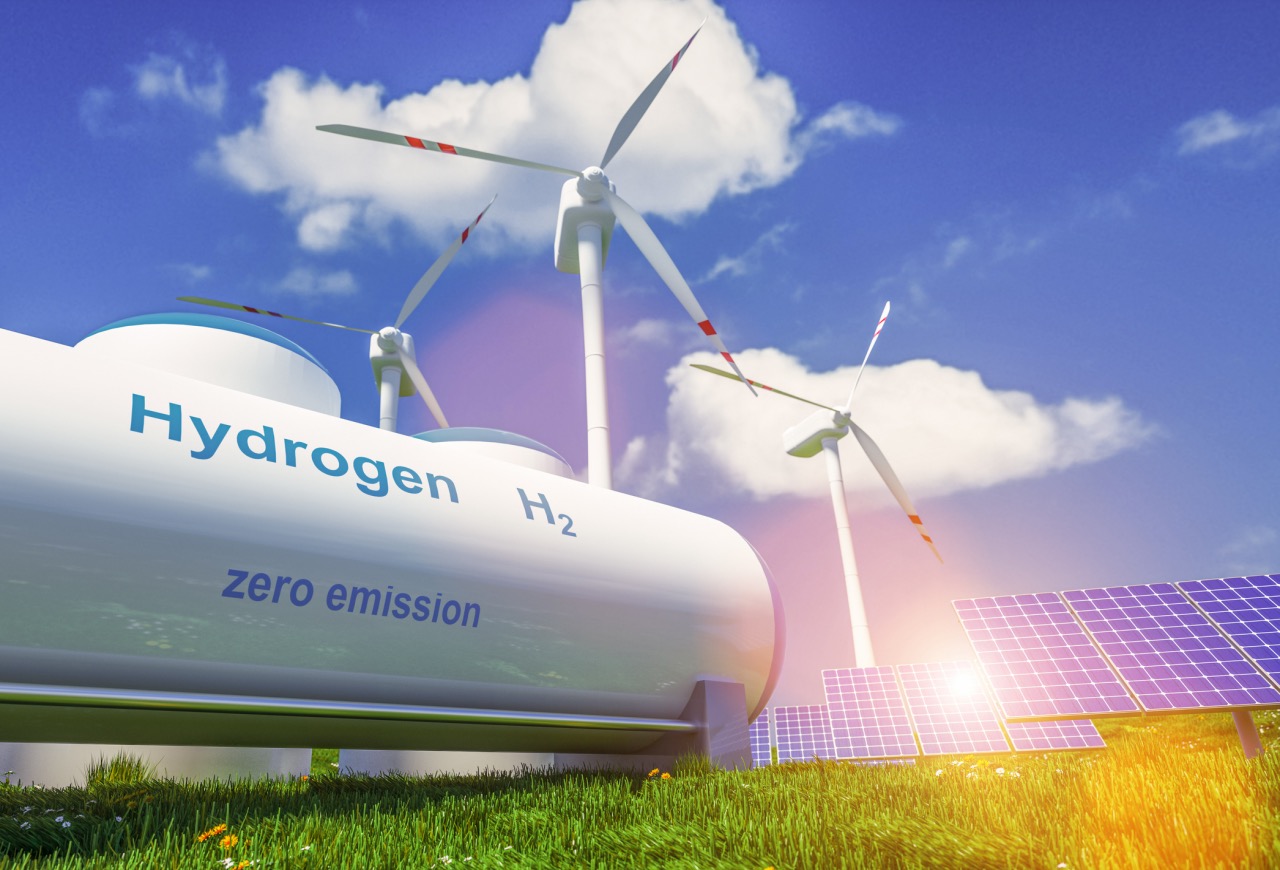Green hydrogen is not a ‘cure-all’ for the world’s energy problems, but KGAL’s Thomas Engelmann believes the sector is set to play a significant role in the energy transition

Investment in green hydrogen – hydrogen produced using renewable energy that can substitute for fossil fuels in many applications – is still largely the preserve of venture capitalists with a high-risk appetite rather than pensions funds, but that is set to change over the next few years, according to Thomas Engelmann.

The head of energy transition at German-based investment manager KGAL told Impact Investor that high natural gas prices due to the impact of the Ukraine war, combined with growing pressure for countries to meet their green energy targets is bringing the green hydrogen sector into sharper focus for a wider range of investors.
The building blocks for expansion are already in place. The technology is ready, and manufacturers are waiting for the orders to roll in, the cost of renewable energy is currently cheaper than fossil-fuel power in some places, and the need to meet emissions targets and the tighter environmental legislation will drive more investment in sustainable energy, especially in Europe, he argued.
“Just look at what happened in offshore wind. Fifteen years ago, banks said there was no way they could invest in such projects. Now banks are competing with each other to offer the lowest interest rates to get access to offshore wind,” he said.
“If we do it in a clever way, green hydrogen projects can follow the same path. For many projects now, investors will be private equity looking for double digit IRR [internal rate of return], but there is also an increasing number of value-add investments available, based on asset financing. In two to five years, these projects will be regarded as core+ assets and then, in five to 10 years, as core assets for institutional investors.”
While Engelmann doesn’t think green hydrogen is a cure-all for the world’s energy problems, he does believe it is set to play a significant role in the energy transition – and soon, given the EU’s need to meet ambitious carbon emissions and sustainable energy targets by 2030.
KGAL is currently formulating its hydrogen investment strategy, which is still in its early stages. To underscore its enthusiasm for the sector, the investment manager has published a report “Green H2 Investments – from Buzz to Boom”, in which KGAL, together with Aurora Energy, research institute Fraunhofer ISE, consultancy Roland Berger and legal firm Watson Farley and Williams make the case that a green hydrogen economy should be “vigorously pursued”.
Versatile technology in need of a kick-start
Green hydrogen is produced by splitting water into hydrogen and oxygen using electrolysis powered by renewables.
It offers a way to store energy from surplus renewables generation for later use. It also offers a clean alternative to fossil fuels across the energy sector, by powering fuel cells for transport, substituting for gas and coal in power stations, replacing natural gas in home heating and replacing fossil fuels – and hydrogen produced using fossil fuels – in industrial processes such as steel, ammonia and fertiliser production.
Less than 1% of the roughly 100m tonnes a year (t/y) of hydrogen produced globally today uses low-carbon technology, but Wood Mackenzie forecast earlier this year that the global hydrogen market would more than double to 223m t/y by 2050. By then, virtually all demand is expected to be met by green hydrogen. Getting there, would require at least $600bn of investment, the energy consultancy estimated. Roland Berger anticipates a six-fold increase in the hydrogen industry’s electrolysis capacities by 2025.
While China is likely to be that largest contributor, the EU is likely to be play a key early role in promoting green hydrogen. An EC staff working document, published in May 2022, outlined a plan to produce 10m t/y of renewables-based hydrogen and import a further 10m t/y by 2030.
Historically, one of the drawbacks to replacing emissions-heavy hydrogen production processes such as steam methane reforming with green technology, has been a lack of adequate renewable energy supply for the power-hungry electrolysis process.
Another has been the high cost of renewable power, but that looks less of a disadvantage now as high gas prices send the price of fossil-fuel generated electricity soaring. According to energy consultancy Rystad, high spot electricity prices, particularly in Europe, have changed the economics of utility-scale wind and solar investments. “Potential payback periods of under a year could start a race to develop renewable assets purely based on project economics,” Rystad said in an October 12 note.
Few analysts are forecasting gas prices – and electricity prices – will remain at current levels permanently, but few are predicting they will drop back to the levels seen prior to the start of the Ukraine conflict either.
This could help kick start the green hydrogen sector, but a shift in thinking about what renewable energy is for may be needed. Engelmann says development of large-scale renewable energy infrastructure has tended to be driven primarily by demand from the power grid rather than the needs of individual industries, but that this needs to change if green hydrogen production is to scale up faster.
“Renewables have always been seen as part of electricity production for the grid. We need to change the system. We need permits to build electrolysers and we need the solar or wind resources to go with it. In two to three years, I believe a lot of renewable projects will not be built for selling electricity, but for producing hydrogen for the mass market,” he said.
Creating a liquid market
The hydrogen market also needs to become more liquid to encourage investment, says Engelmann. At present hydrogen is mainly sold on a contract-by-contract basis, often with little certainty over future sales.
That greater liquidity may now be on the way, in Europe at least. In September, European Commission (EC) president Ursula von der Leyen announced plans for a “European Hydrogen Bank”, backed by at least €3bn, to stimulate the industry.
“We need to move our hydrogen economy from niche to scale,” von der Leyen said in her annual State of the Union address. She said the bank would help guarantee the purchase of hydrogen, potentially by using resources from the EU’s €38bn Innovation Fund, but details of how the bank will operate remain sketchy.
Not everyone is happy about the news. Some environmental groups believe scaling up green hydrogen production too rapidly risks diverting renewable energy from more effective uses and risks slowing down decarbonisation of the power sector. For example, Friends of the Earth, while acknowledging that hydrogen has a role in the future energy mix, believes using renewable energy to produce electricity directly to heat homes would be more cost-effective and efficient than some hydrogen projects currently being developed.
There have also been concerns in the industrial sector that the higher costs associated with producing hydrogen using renewables rather than fossil fuels could drive end users such as steel makers to move production out of Europe to cheaper parts of the word. Engelmann believes that is unlikely to happen, given the EU intends to impose higher tariffs on imported products manufactured in a non-sustainable manner.






